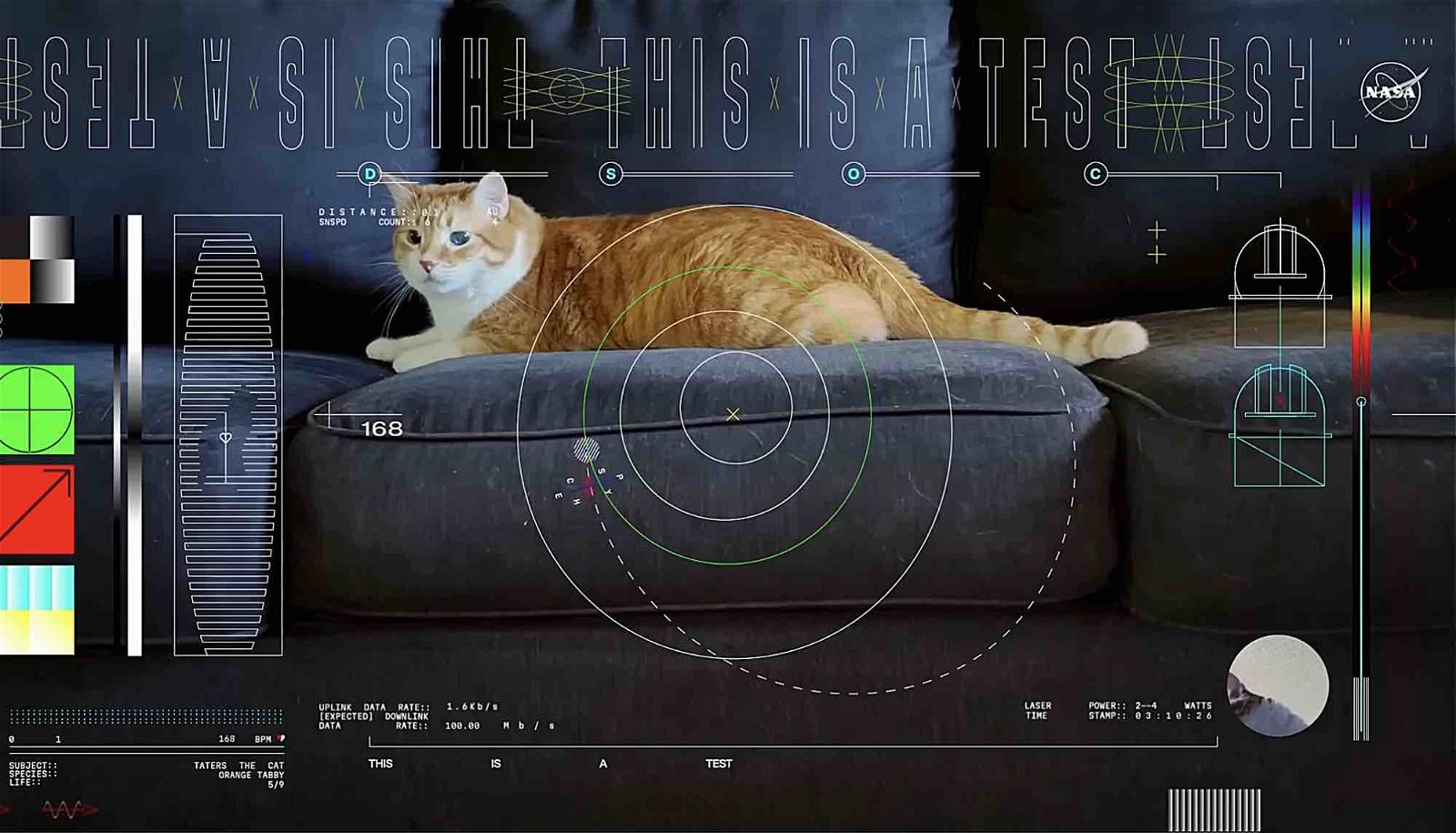A NASA laser experiment has successfully demonstrated the ability to beam ultra-high-definition streaming video to Earth from an incredible distance of 19 million miles away, the U.S. space agency announced this week.
The achievement demonstrates NASA’s ability to relay high-quality video and other forms of information from deep space, a capability that could be crucial for future crewed space missions beyond Earth’s orbit.
Formally called the Deep Space Optical Communications experiment, the successful demonstration relied on an instrument called a flight laser transceiver to transmit a 15-second test video, which reached Earth across a distance roughly 80 times the distance from Earth to the Moon in just 101 seconds. The dispatch utilized the system’s maximum bit rate of 267 megabits per second.
The system is equipped to relay near-infrared signals, an encoded sample of which it beamed to the Hale Telescope at Caltech’s Palomar Observatory for download. From there, each frame of the video, which depicted an orange cat named Taters chasing a laser, was transmitted to NASA’s Jet Propulsion Lab where it was played in real time.
NASA Laser Experiment Broadcasts a Cat Video from Deep Space
“To make this significant event more memorable, we decided to work with designers at JPL to create a fun video, which captures the essence of the demo as part of the Psyche mission,” said Bill Klipstein, the demo’s project manager at JPL. Along with imagery of Taters, the video also features an overlay of data about Psyche’s orbital path, as well as technical data that also included the feline’s heart rate and other information.
Launched with NASA’s Psyche mission in October, as the spacecraft makes its way toward the main asteroid belt between the planets Jupiter and Mars, the relay system will help facilitate high-data-rate communications that future missions will be able to rely on to transmit scientific data back to Earth, along with high-definition imagery obtained during space missions; all of which will be pivotal capabilities during future crewed missions to Mars.
The successful test this week followed earlier experiments in recent weeks that also demonstrated faster data downlink speeds and other capabilities. Earlier this month, a project test succeeded in reaching downlink bit rates of as much as 267 Mbps, the system’s maximum rate, which is comparable to Earthbound broadband internet download speeds.
During the test on December 4, a total of 1.3 terabits of data was downloaded, marking a breakthrough for NASA compared with past missions, where comparable amounts of information would often have taken years.
NASA Deputy Administrator Pam Melroy said in a statement that the successful experiment “underscores our commitment to advancing optical communications as a key element to meeting our future data transmission needs.”
“Increasing our bandwidth is essential to achieving our future exploration and science goals,” Melroy added, “and we look forward to the continued advancement of this technology and the transformation of how we communicate during future interplanetary missions.”
Micah Hanks is the Editor-in-Chief and Co-Founder of The Debrief. He can be reached by email at micah@thedebrief.org. Follow his work at micahhanks.com and on X: @MicahHanks.

